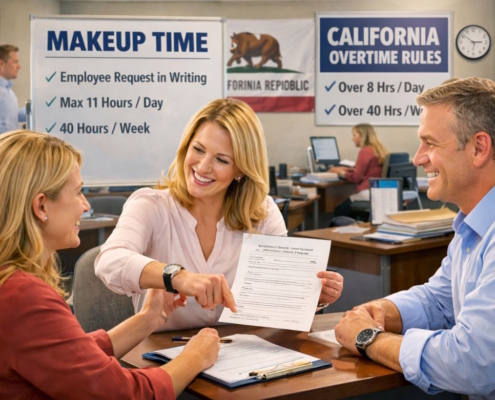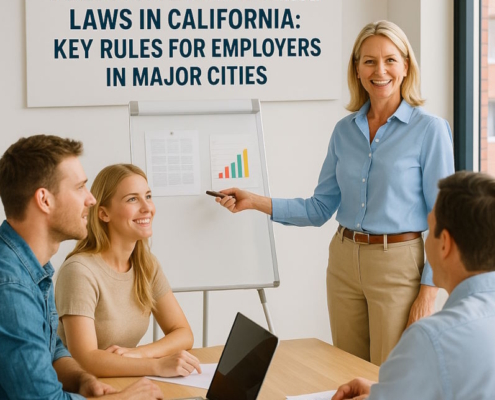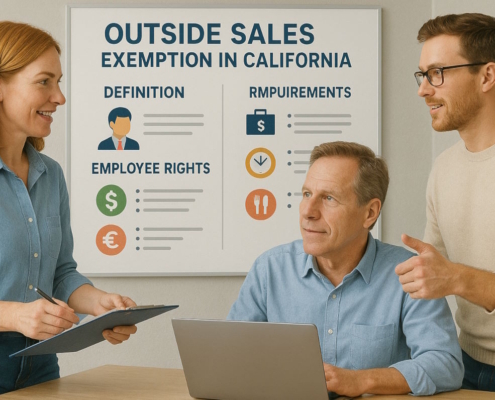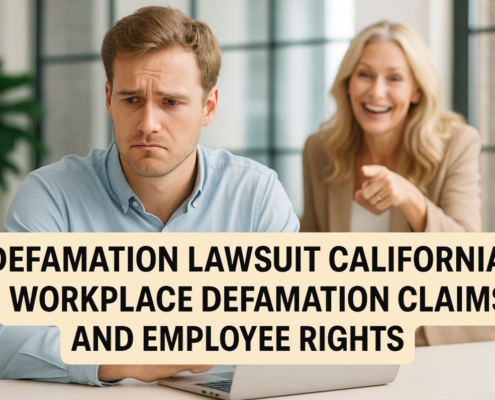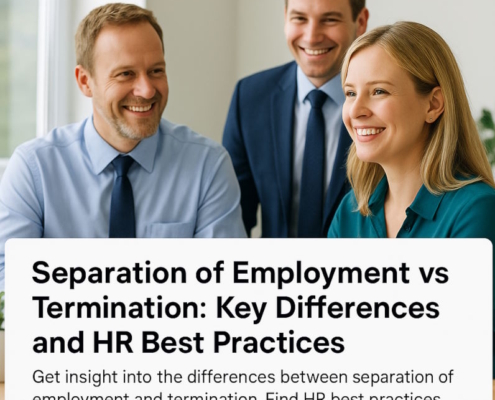Introduction
In an effort to draw in the best talent in the country, the Golden State is renowned for providing the best benefits and protections for workers. With the implementation of California vacation law 2025, significant updates have been made to regulations governing paid and unpaid leave. Here, we examine the changes made to leave regulations and holiday observances in 2025 before summarizing the key points affecting paid and unpaid leave.
Let’s start by discussing the new leave regulations in California for 2025.
New Leave Laws in California
The most significant change under the California vacation law 2025 pertains to Paid Family Leave. The requirement that qualified workers take two weeks of accumulated vacation time prior to receiving PFL benefits was removed by Assembly Bill 2123. Employees can now take care of sick family members without losing their paid vacation time thanks to this adjustment.
On 1st January 2025, another clause that affected PFL went into force. As much as 90% of regular salaries will now be paid to eligible employees who make under $63,000 per year while they are on leave. Employees who require time off to attend to family obligations will be much relieved by this.
Additionally, prolonged paid sick time for survivors of specific crimes was added by Assembly Bill 2499. Family members who have additionally been impacted by crime are included under this clause. Workers now have more protections under California vacation law 2025 to attend to their own and their families’ recuperation, without worrying about being fired, thanks to this development.
How is leave regulated in California?
The term Paid Time Off refers to any type of leave that employees are free to take for any reason, including personal, medical, vacation, or the arrival of newborn babies. In contrast to family and sick leave, which are frequently imposed by California law, extra vacation time is up to the employer. With more safeguards than federal rules, the Golden State is renowned for its employee-friendly leave policies.
The duties and obligations of employers under California vacation law 2025
In addition to following their own corporate policies and procedures, California employers who provide vacation benefits are required to abide by both federal and state legislation. Certain types of leave, like paid sick leave, are required under the terms of these regulations, and companies are not allowed to deny any employee the benefits that are specified. The following important laws that control labor procedures in California must be followed by employers:
- California Labor Code
- The Fair Employment and Housing Act
- California Family Rights Act
Additionally, employers must properly explain their leave policies and implement them uniformly across the whole organization. In addition to these duties, employers have to:
- Create a handbook or written policies and make them easily accessible to all staff members.
- Maintain precise records of accruals & leave balances.
- Upon leaving the position, reimburse any unused paid time off.
- Employees who take unpaid or paid vacation as permitted by federal, state, and corporate policies should not face retaliation.
Vacation Pay & Benefits
Employers in the jurisdiction of California are not required to offer vacation compensation. However, the law places constraints on the employer, guaranteeing fair and equal labor practices, if the employer is offering this benefit in accordance with their corporate policies and laws.
The state of California does not establish minimum vacation days of leave because employers determine vacation time. In order to draw and keep top talent, the employer may grant fifteen, twenty, or even twenty-four days of leave annually. They can also handle their vacation pay obligations however they see proper, as long as the company’s standards are clear and consistently implemented.
1. Unpaid leave
The quantity of unpaid vacation time that an employee is permitted to take will be determined by corporate policy. Workers should also be aware that unpaid leave isn’t protected by any “job protection” regulations, which means that an employer can fire an employee if it is deemed essential.
2. Vacation time accrual
Paid vacation time, which is a component of the worker’s salary package and accumulates as work is performed, is regarded as wages under California employment statutes. Because of this, the employer cannot take away or cancel vacation time that has been accrued.
Consider it like depositing paid time into a bank, where it will grow until you take it out. The business is required to reimburse workers for any unused vacation time in their last paycheck in the event that employment services are discontinued. Please be aware that various leave benefits may be available to employees protected by a contract of collective bargaining.
3. The rule of “use it or lose it”
Employers in California are prohibited from putting any such restrictions on paid time off. California is one of the few states that follow this regulation; the others being Colorado, Montana, & Nebraska. Likewise, since the worker has accumulated paid time, the employer is unable to deduct holiday compensation during the period of pay. They may, nevertheless, impose a cap on the number of days that may be accrued.
Benefits of Sick Leave under California Vacation Law 2025
California requires eligible employees to take sick leave. Starting on 1st January 2024, workers will be entitled to 40 hours or 5 days of paid time off for illness annually. This is more than the previous rule, which allowed for a maximum of twenty-four hours of compensated sick leave per year. Although sick leave is provided to all employees, they should have worked for at least thirty days in order to qualify.
This benefit is further extended under the Family and Medical Leave Act for a maximum of 12 weeks; however, employers are not required to provide paid sick leave within this time. Employees who require unpaid sick time to recuperate from a major illness, like cancer, and new moms who experienced difficulties during childbirth are the main beneficiaries of this clause.
If an employee has worked for the company for a minimum of a year or 1250 hours over that time, they are entitled to this leave. Even if your sick leave extends to 12 weeks, you cannot be fired for taking it because all sick time falls under the category known as “job-protected leave.”
Accrual
Employers have two options for providing sick leave benefits:
- Accrual method: Under this approach, workers receive about one hour of time off for illness for every thirty hours they work.
- The entire five days of paid time off for illness are provided to employees at the start of the year as part of a transparent policy.
Employers are permitted by law to impose a cap of 80 hours on the amount of paid sick leave that employees can accumulate under the accrual system. Nonetheless, the annual maximum for paid sick leave is forty hours. Additionally, there is no rule requiring that sick leave be paid out along with the worker’s last paycheck when they leave their job.
Paternity and Maternity Leave Benefits
California offers one of the best family leave policies in the nation to new parents, thanks to a variety of leave provisions.
The following are the main laws that control paternity and maternity leave:
- To connect with a newborn child, employees are entitled to a maximum of twelve weeks of unpaid, job-safe leave under the California Family Rights Act. A foster child, adoptive child, or biological child is covered.
- The state-funded Paid Family Leave provision provides up to eight weeks of partial salary replacement.
- Employees who are disabled during pregnancy, childbirth, or a related ailment may be eligible for up to four months of job-protected leave under the Pregnancy Disability Leave program.
The most significant benefit is that PDL and CFRA may be taken in succession, potentially resulting in five months of secured paid vacation. In order to draw in talent, employers may choose to provide paid maternity leave, but this is not required.
Paid Family Leave or State Disability Insurance
Both the PFL and the SDI are state-run initiatives that are financed by payroll deductions from employees. Unfortunately, these initiatives are salary replacement plans that employees can use in the event of a medical emergency or long-term disability; they do not provide job protection.
1. State Disability Insurance
This scheme allows for the replacement of as much as 70% of wages in the short term. The highest possible benefit amount for 2025 is $1,620. The majority of workers are automatically covered by payroll deductions. Public servants, independent contractors, and freelancers are not included in this. Employees must certify their claims in order to support their submissions, which are made via the EDD.
2. Paid Family Leave
Nearly every worker who has contributed to the SDI will be eligible for up to eight weeks of paid time off that PFL offers. The following considerations led to its special design:
- Forming a bond with a foster child, adopted child, or infant.
- To care for a member of one’s close family (spouse, sibling, parent, grandchild, parent-in-law, grandchild, child, or registered domestic partner) who is gravely ill or injured.
- Activities involving the enlistment of a close relative in the military.
As was already indicated, in 2025, a new law brought much-needed assistance to workers making less than $63,000 annually. Under this plan, they are entitled to up to 90% salary replacement.
Bereavement Leave
Under AB1949, which became effective on 1st January 2023, California workers are entitled to paid mourning leave (equating to up to five days) when a family member has passed away. They could be a parent, sibling, spouse, grandparent, grandchild, or a domestic partner.
The following are noteworthy restrictions on this benefit:
- After the loss, leave has to be taken within three months.
- Although the leave is not paid, businesses may permit their staff to use paid vacation days or other leave that has been accrued.
- Applies to all companies that employ 5 or more people.
- It’s very likely that employers may ask for records like a published obituary or death certificate in the event of a death.
Additional Leave Benefits
The most significant leave benefits and their effects on the employer and employee in California have been the focus of our discussion, but we will also touch on several less well-known leave benefits in passing.
Although companies are not required to offer paid vacation time for California holidays, all Californians are entitled to 11 days off annually.
Legal holidays in California in 2025
In 2025, California will observe the following holidays as official:
- On January 1st, New Year’s Day
- 20 January: Martin Luther King, Jr.
- 17 February is Presidents’ Day
- 31 March is Cesar Chavez Day
- May 26, Memorial Day
- Fourth of July is Independence Day
- Labor Day is on September 1
- Veterans Day is on November 27
- November 28, the day after Thanksgiving
- December 5, Christmas Day
Conclusion: California vacation law 2025
In a setting that already favors job protection, California’s leave laws are still developing. California law mandates that companies follow both federal and state regulations that protect accrued leave, even while employers are free to give paid vacation time.
In order to keep ahead of modifications in regulations enacted in 2025, HR teams should revise their leave policy now. This promotes positive employer-employee relations in addition to preventing expensive errors.







